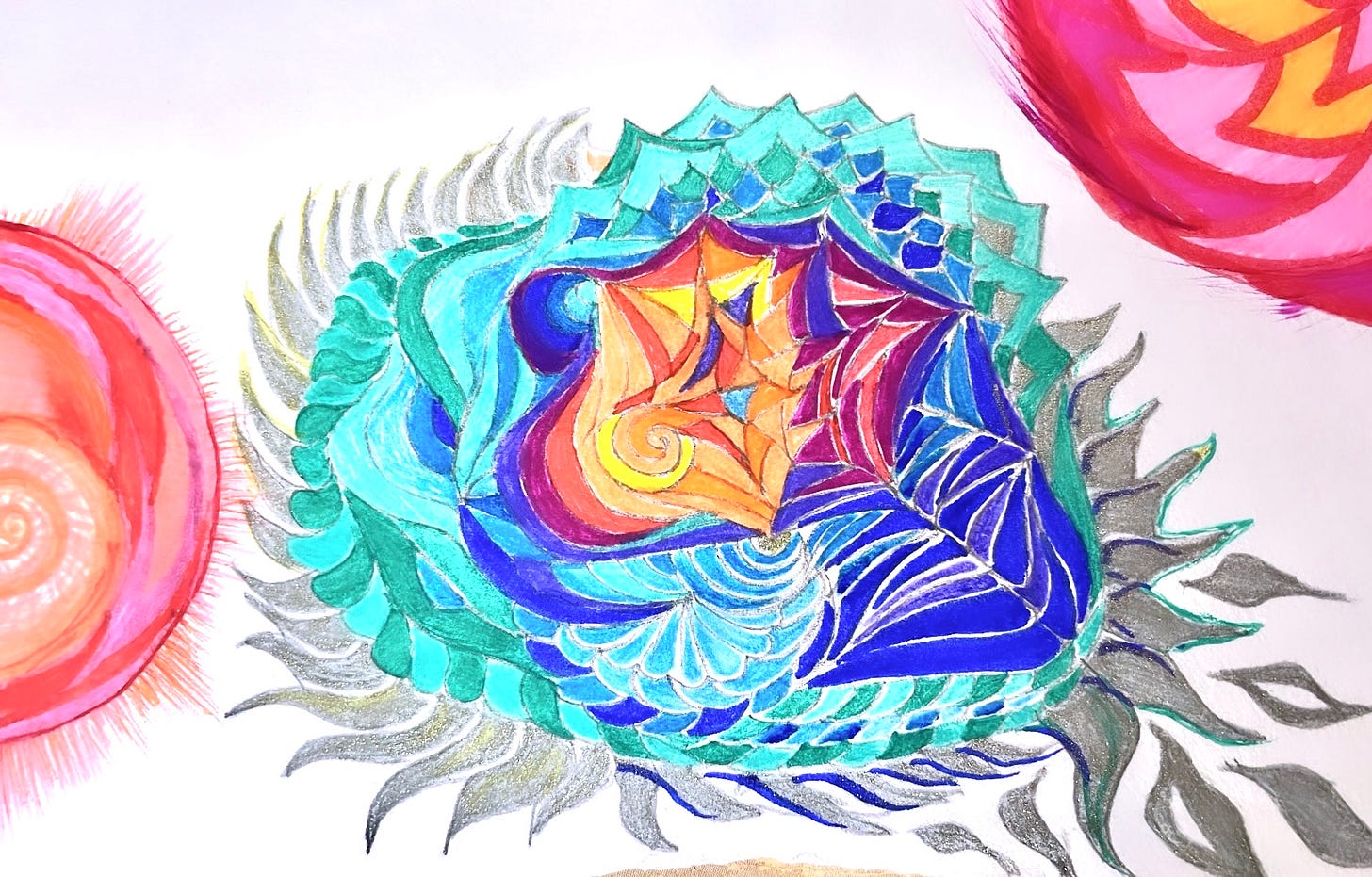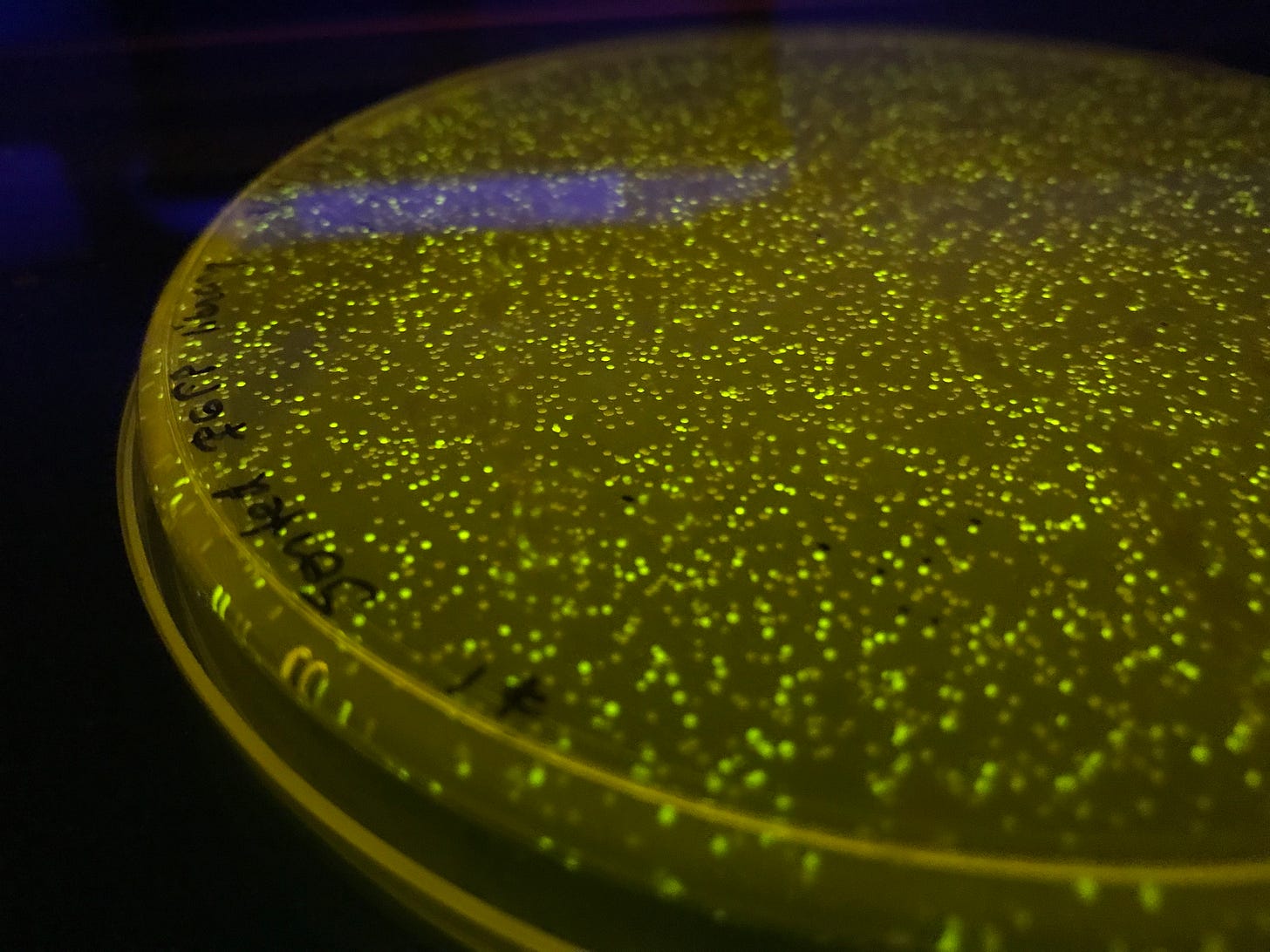Light Biology: Bioluminescence and Fluorescence
How biotechnology can harnesses light to enhance our lives
Every year, starting in May, bands of devotees flock to Florida’s Space coast, near Cape Canaveral, to partake in a unique nighttime experience. It is neither a SpaceX rocket launch nor the Electric Daisy Carnival—although it does feature a spectacular light show. “Bands” may be a stretch: considerably fewer people are interested in observing the enchanting performance nature puts on compared to the man-made attractions of nearby Orlando. The phenomenon I’m talking about is bioluminescence.
Once a year, bioluminescent plankton blooms in the warm brackish lagoons and mangrove canals. When dinoflagellates—the name of these microscopic organisms—reach a critical concentration, they begin to emit light that is bright enough to see with the naked eye.
To see this nature’s wonder, you would kayak through the dark mangrove canals at night. With every paddle stroke, the water sparks blue underneath you. A school of fish darts by, setting off underwater fireworks. Once in a while, you can even spot a dolphin swimming with a glowing blue aura around it. It is a magical, mystical experience that reminds you that everything around is alive and full of wonder.
Light is the primary life source for the Earth. It is free energy that plants, algae and cyanobacteria convert into nutrients to power their growth—a process called photosynthesis. All other living beings, in turn, get their energy from consuming these photosynthetic organisms (with the exception of rare bacteria that can harness chemical bonds to feed themselves). Humans are only starting to dip our toes into harnessing light for energy—but nature has been doing it for millions of years.
It is no wonder that biology has evolved in an intricate interrelationship with light. Lightning bugs use light to attract the opposite sex. Kisslip cuttlefish and firefly squid put on their lights to lure in prey, as well as to perform stunning mating rituals with their dynamic light patterns. In the absence of sunlight, in the depths of the sea, bioluminescence serves as an important means of communication.
Bioluminescence is a biophysical phenomenon where biological molecules emit light. It happens when electrons in molecules are “excited”—or bumped up to a higher energy state. When they drop back to their normal energy level, that little bit of energy is released as a photon—a particle of light. This process requires two special proteins: one called luciferin which carries those excited electrons and another enzyme called luciferase which breaks the chemical bonds in luciferins, releasing the hyped-up electrons that spit out a particle of light.
Although scientists have shown that animals use bioluminescence to attract and ward off prey or to communicate with their kin, they are still not entirely sure how and why this metabolically costly mechanism evolved. In the age of biotechnology, however, we are less interested in the “why” and more in how we can harness nature’s superpower.
The unseen light
There is a second type of biological light emission called fluorescence. Unlike bioluminescence which is produced by the protein-enzyme dance of luciferin-luciferase, fluorescence is a single-protein job. The mechanism for light generation is quite different in fluorescence. In fact, it is more of light conversion than light generation. To glow, the fluorescent protein must first absorb light. The cool part is that the light that is absorbed can be invisible—for example, a UV light frequency—but the light emitted is visible to the human eye. In this case, the high-energy UV photon is captured by the protein’s structure where it kind of tumbles down a few energy levels and comes out a different color.
When was a researcher in graduate school, I used fluorescent proteins in my work. And it was not just for fun (although I did take some cool pictures of glow-in-the-dark bacteria). In biotechnology fluorescent proteins are often used as indicators. For example, you could “tag”, or attach a fluorescent protein onto any other protein and see where it is expressed in the body or how much of it an organism makes. You could even visualize brain structures with them.
In my case, I was measuring the strength or intensity of “promoters”—biological instructions in the DNA code that tell the cell when, where and how much of a protein the cell needs to make. By using a fluorescent protein as an indicator, I could literally see how strong a promoter was, as well as determine what factors affect its strength and how to predictably change it.
In biotechnology, there is a whole repertoire of fluorescent proteins: green, red, yellow and blue ones, so you can measure multiple biological properties at the same time. Most of them have been discovered and harnessed from nature, but there are probably many other ones that have not been described yet. This is why biotechs like Basecamp Research are trying to discover new proteins by sequencing the DNA of organisms they find in remote environments.
Corals, mushrooms, bacteria and other organisms have fluorescent proteins. Bleached-out coral skeletons sometimes even retain a faint ghostly glow after they die. The physical basis of it is similar to fluorescence: the protein molecules in corals can absorb light and release it. But in this case, the photon emission reaction happens much slower—a process called phosphorescence. This phosphorescence can remind us that in the age of mass extinction, we may want to do something before the trace of these organisms disappears forever.
A new territory
Biotechnology has not only been harnessing the light-producing ability of nature but is now starting to enhance it. An EU-funded research project called ENABLED is working on developing nature-powered light bulbs using much stronger, engineered artificial light-emitting proteins. Yet others are coming up with even more creative ways to utilize bio-based light.
A company called Light Bio has put bioluminescent genes from mushrooms into petunias, making plants that glow in the dark. These plants have just been approved by USDA as “safe to grow in the US”, so you will be able to order the novelty soon—as early as 2024—and light up your garden paths at night with these mystical flowers.
To me, this seems like a much more sustainable option. I have discussed the harmful effects of bright light at night in a previous blog post. Additionally, scientists have shown that insects are easily disoriented by light pollution at night, affecting their behavior and threatening their survival. Compared to blinding LEDs, the soft light of the glow-in-the-dark petunias is unlikely to lure them out of nighttime slumber into pollination raves. Thanks to biotechnology, both we and insects could sleep better.






Wow, thanks for the terrific info and news Katia and I can't wait to order from Light Bio their novelty and light up a bit my garden in the night, trying to recreate the magical atmosphere that I lived in a natural paradise called "Eolian Islands" (particularly Salina and Filicudi islands) where I was recently and actually was able to reconnect my feelings and soul with a wild nature and incredible sea, with the smell of some flowers blooming in the nifìght in a moon garden with Datura Arborea, Cactus orchideas and Bella di Notte (Mirabilis Jalapa)... dreams sometimes can become true !!
Populi meditati sunt.
L